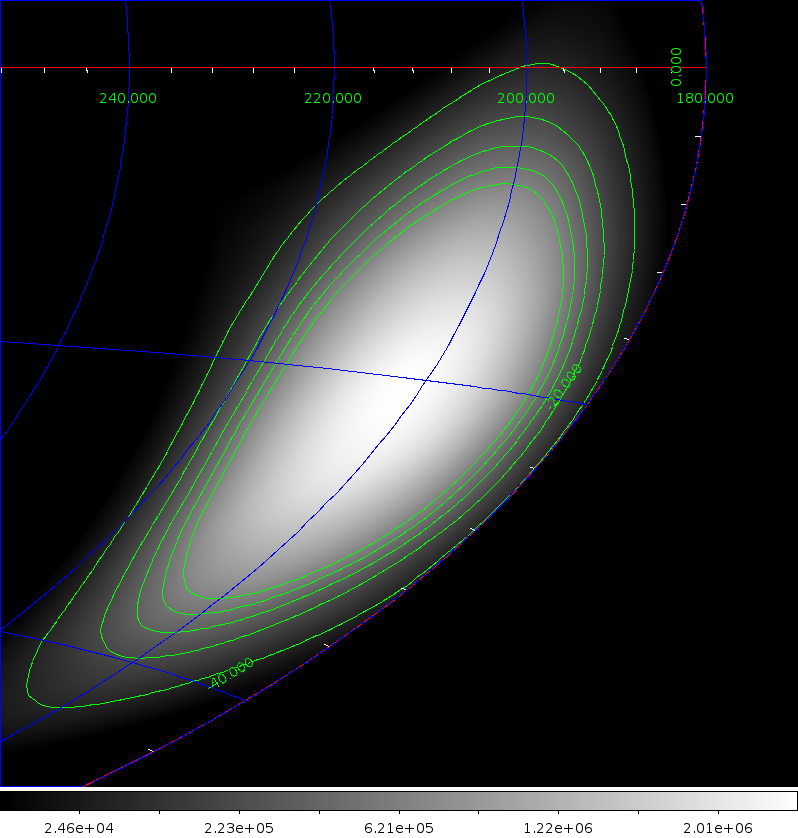Proposal Details - 1020004
Massive Stars in the Orion Region (Diehl)
Proposal Abstract
Massive stars and their impacts on their surrounding interstellar medium comprise the feedback scenario which is one of the main astrophysical issues in the context of galaxy and cosmic chemical evolution. Radioactivity from 26Al adds a unique diagnostic tool for studying this scenario in nearby massive-star regions. The Orion region hosts one of the closest such regions at ~400 pc. COMPTELs measurement of 1809 keV emission from this region had shown an interesting offset of the 26Al emission from its likely sources, and emission appears rather extended. This suggests champagne-like outflow into the Eridanus cavity, as has recently also been seen with XMM-Newton. If true, this opens unique possibilities to study the ISM as it is shaped by massive stars and the interaction of massive stars with their surrounding ISM in a new way: Due to their proximity and location on the near side of molecular clouds and at the edge of a large cavity, we can compare the locations of massive stars to the morphology of the ISM and the emission pattern of 26Al radioactivity, in order to constrain 26Al ejection from massive stars in mass and velocity. Previous observations led to ~3 Ms of exposure, resulting in a tantalizing hint of the expected signal. With our proposed deepening of exposure (3 Ms in AO-10) we aim to measure the intensity (from AO-10) and kinematics (later, from more AO-11 observations) of this nearby 26Al source with INTEGRAL. We aim at unique data for ISM dynamics and massive stars as its driving engines within INTEGRALs lifetime there is hardly a more suitable and closer target region. These observations also support search for annihilation radiation, and for the intensity of nuclear deexcitation gamma-rays in the MeV range, both valuable diagnostics of the structure of superbubble interiors; moreover, over 30 Fermi sources can be studied within our target region.
Observation Strategy (Recommended by TAC)
Total of 3 Ms in the standard 5x5 dithering mode distributed on three separate regions centered on (l, b) = (205, -20 degrees), (200, -18 degrees), (200, -26 degrees). Each region will be observed for 1 Ms.
Proposal grade: A
Data Rights (Recommended by TAC)
Data rights were granted for the analysis of diffuse emission of 26Al, 12C, and 16O.
Exposure Map
The exposure maps are in galactic coordinates using the Aitoff projection and units of seconds, and the colour scale is indicated at the bottom. The green lines provide the 50, 200, 350, 500 and 650 ksec contour.
